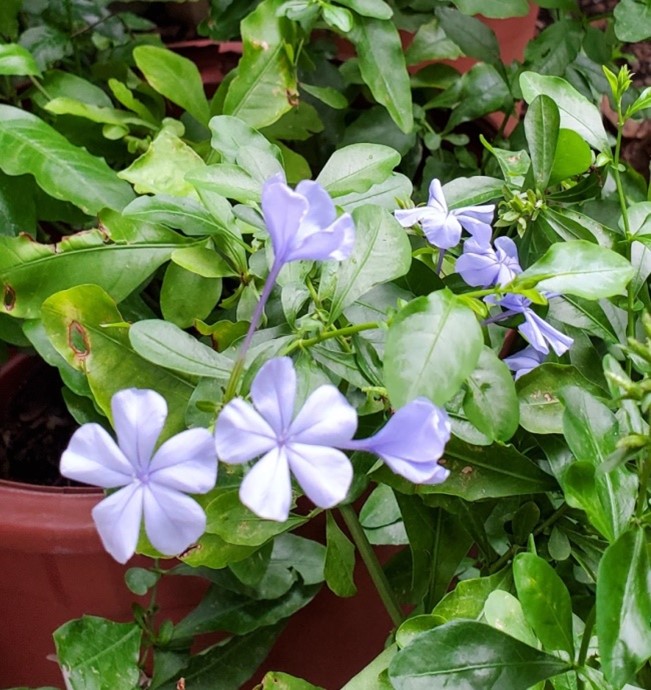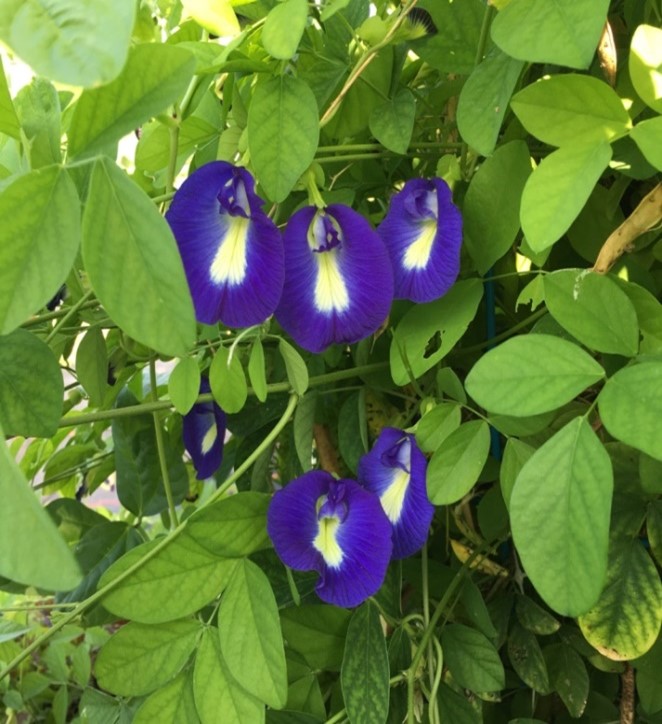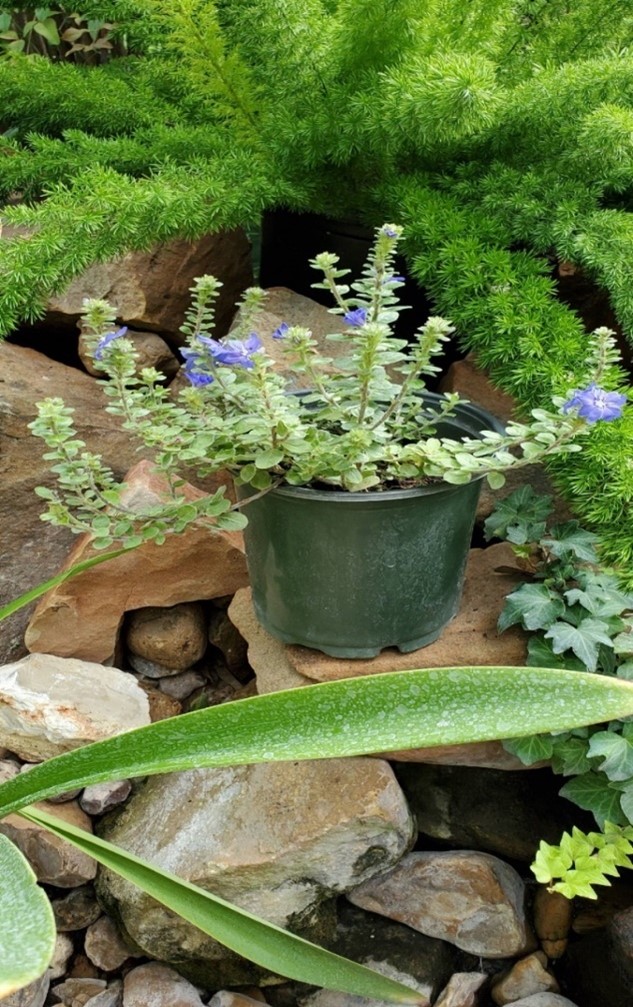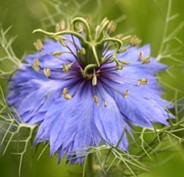By Joyce & Dwight Dare, Bexar County Master Gardeners

We have always wanted a “truly blue” flower in our landscape. However, “truly blue” flowers are not very easy to find, especially since many so-called “blue” flowers seem to be shades of purple, lavender or blue. Thus began our search for a truly “blue” flower. Of course, the first and foremost plant with blue flowers is our very own, the Texas Bluebonnet.
Another common blue flowering plant is the Light Blue Plumbago which we grow in a large container, seen to the left. However, its flowers can appear more lavender than blue. Aside from these two examples, we continued our search at local nurseries for a really blue flower we could grow in our yard.
We found Blue Asters, Blue Daze, and Philippine Violet, but were told the bluest-colored vine is called Blue Butterfly Pea Vine (Clitoria tematea), as shown below.
We also found a plant named Endless Summer Hydrangea which will bloom blue if grown in an acid environment; otherwise, it will be white or pink.


Two varieties of Morning Glories were available, one of which was Flying Saucer, and that had what appeared to be blue stripes on a pure white background and a lemon-yellow center. The second Morning Glory was Heavenly Blue, followed by Forget Me Not, Flax, Lobella and Utrecht Blue Wheat. Also available were seed packets for Viola and Phlox. So as not to come home empty-handed, we bought an Evolvulus Blue Daze Glomeratus or Brazillian Dwarf Morning Glory, which you can see nestled in our water feature.
To have more choices for blue flowers, we continued our search on the internet at the Gardener’s Path (gardenerspath.com) where we found several suggestions for blue wildflowers for the garden, some of which are: Blue-eye-Grass, which is not a true grass, Asiatic Day flower, Forget-me-not, False Day Flower (or Widow’s Tears}, Texas Baby Blue-eyes, Virginia Day flower, Northern Blue Flag Iris, Chicory, Wild Blue Phlox or Blue Moon, and Bachelor Buttons (Centaurea cyanus), which butterflies love.

Bachelor Buttons are also named Cornflower, which is an annual flowering plant in the family Asteraceae native to Europe. In the past, it often grew as a weed in cornfields (in the broad sense of “corn,” referring to grains such as wheat, barley, rye, or oats); hence its name. It is now endangered in its native habitat by agricultural intensification, particularly by over-use of herbicides. However, Centaurea cyanus is now also naturalized in many other parts of the world, including North America and parts of Australia, through introduction as an ornamental plant in gardens and as a seed contaminant in crop seeds.

Searching further, we discovered the photo below of an interesting blue flower called Love-in-a-Mist (Nigella damascene). It is an old-fashioned garden annual with lovely flowers that appear to be encased in a delicate misty web of bracts. Love-in-a-Mist has a short bloom period.
Native to rocky areas of North Africa and southern Europe, Nigella is easy to start by sowing seeds directly into the soil in the spring, but during the cool months it blooms with interesting flowers to cut. And if you can resist the urge to harvest, you will get quirky seed pods when summer starts heating up.
The Love-in-the-mist grows upright to heights of from 1-2 feet and produces flowers in shades of white, blue, pink and purple. While more than 15 varieties are widely available, the traditional ‘Miss Jekyll Indigo’ has rich blue blooms that float over the finely cut leaves.
In conclusion, we may never find a flower that everyone sees as truly “blue,” but we can grow a variety of so-called “blue” flowers and enjoy all the beauty they bring and the nutrition they provide for birds and other wildlife.
